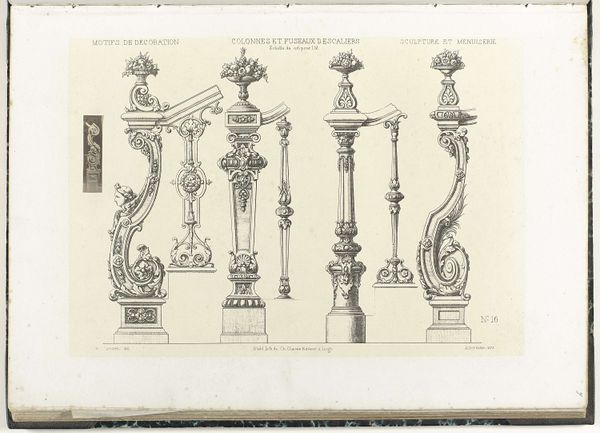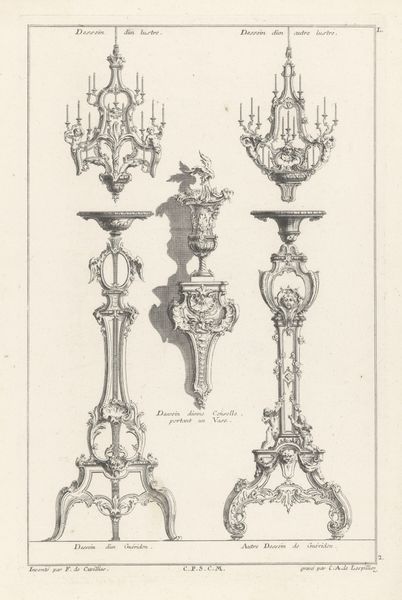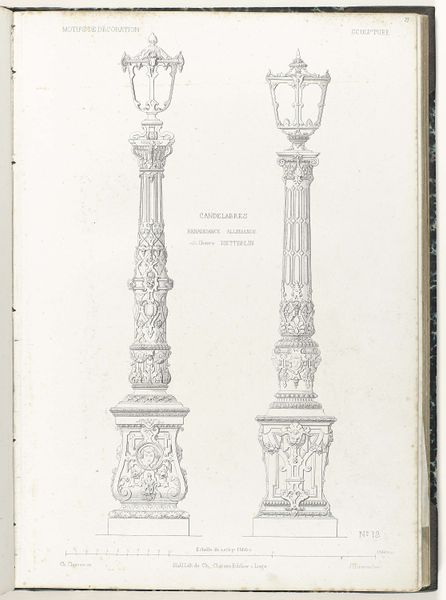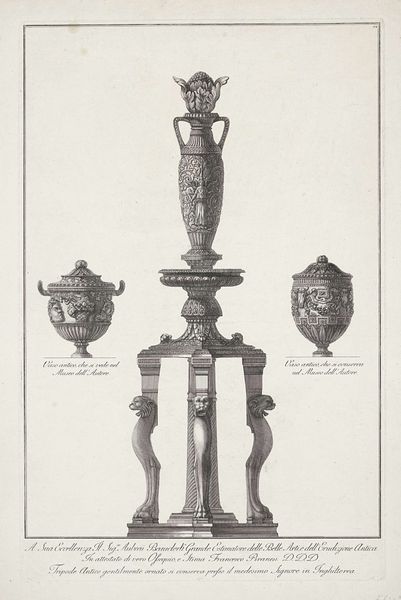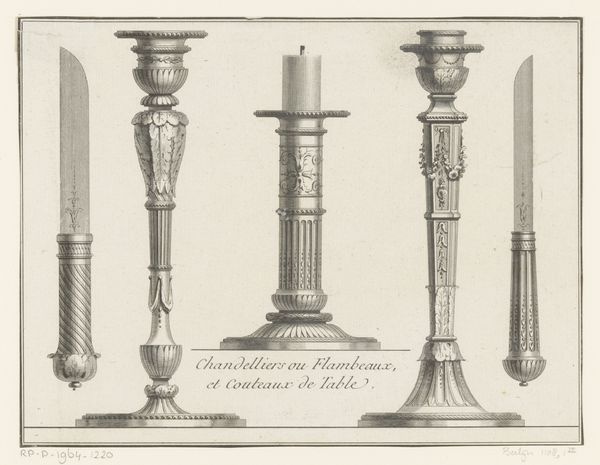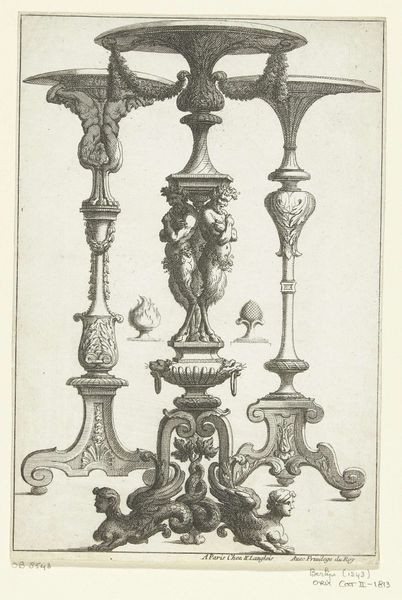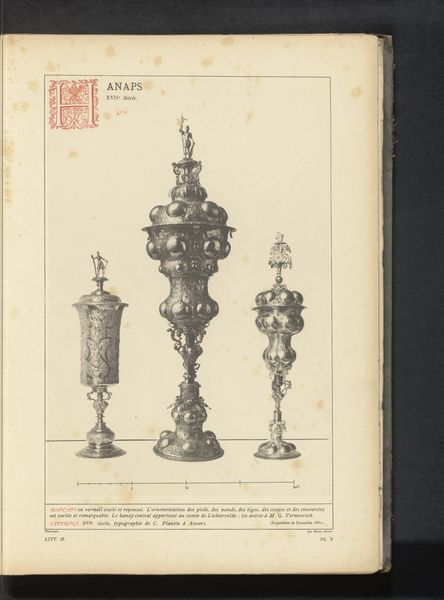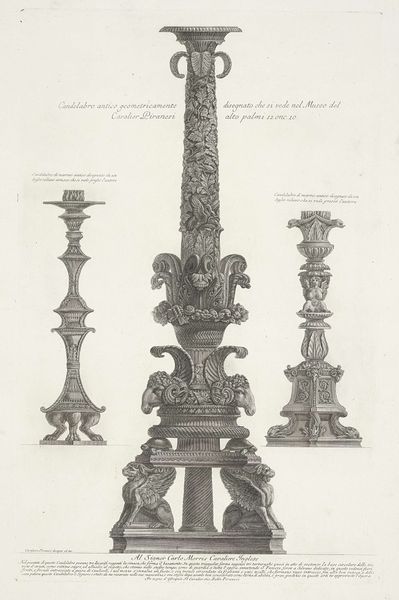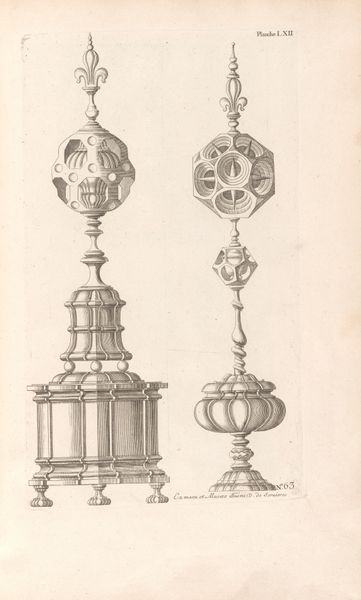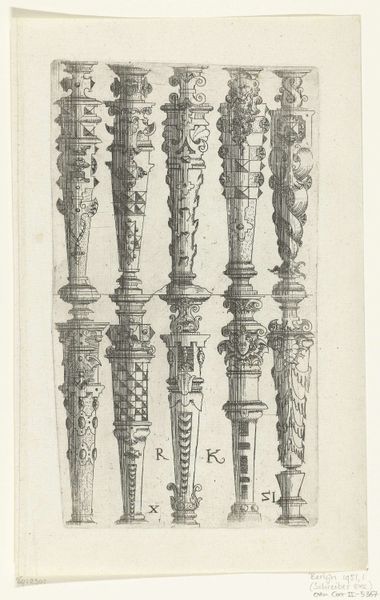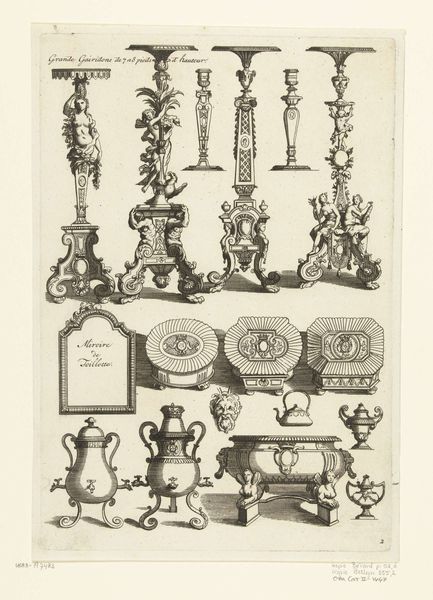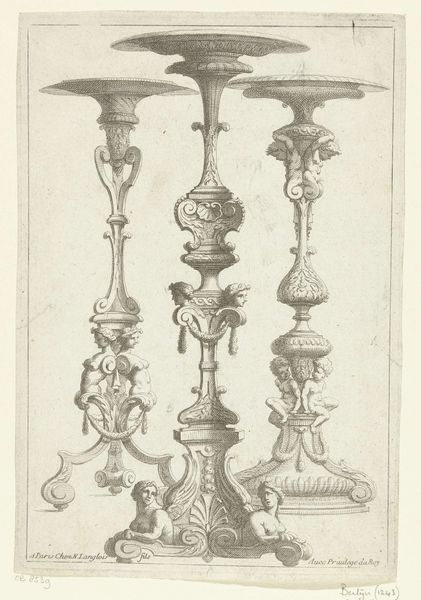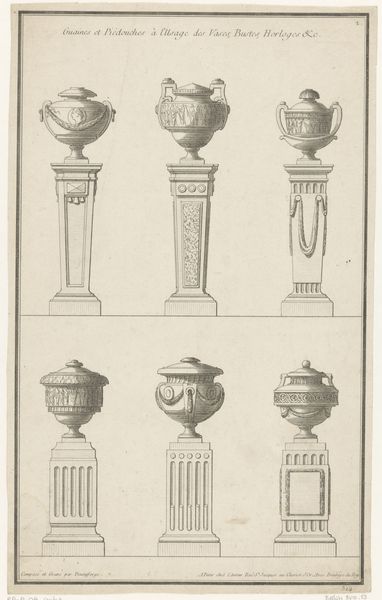
#
aged paper
#
light pencil work
#
pencil sketch
#
old engraving style
#
personal sketchbook
#
pen and pencil
#
sketchbook drawing
#
watercolour illustration
#
sketchbook art
#
watercolor
Dimensions: height 418 mm, width 290 mm
Copyright: Rijks Museum: Open Domain
Curator: Ah, this page! We have here a study titled "Acht zuilen en balusters, drie culs-de-lampe," or "Eight Columns and Balusters, Three Culs-de-Lampe," by Charles Claesen. It's estimated to date between 1866 and 1900. The medium seems to be a combination of pencil and watercolor on paper. Editor: My first impression? It feels like a stage set waiting for a drama to unfold. All those elegant pillars... a hint of forgotten grandeur. There's something hauntingly beautiful about these architectural sketches. Curator: Yes, that grandeur speaks volumes. Columns, of course, are loaded symbols: strength, support, even aspiration. These drawings aren’t simply about structure, but about the human desire to create lasting, meaningful forms. You see that repeated fluting on some columns? Ancient echo of trees perhaps? A symbolic forest holding up civilization itself? Editor: Absolutely. And the 'culs-de-lampe,' those ornate corbels...little nests for light, perched like fantastical birds, each with its personality. Makes you wonder about the buildings they adorned and the stories they witnessed, the warm glow they provided. Makes me almost want to write a gothic novel, or just find one of these details carved somewhere unexpected and run my hands over it, tracing those details back to their creation. Curator: Note too how Claesen has rendered each form. It's technically precise yet also suggestive. A tension emerges between the solid, functional reality of architecture and its symbolic, ethereal presence. This balance shows the skill in his style. And in doing that, invites the mind to envision them in any grand facade we can dream. Editor: You know, looking at this makes me think about how much we've lost. So many of these details get stripped away in the name of 'progress.' It is nice to reflect, sometimes, to get in touch with where we've been and imagine our cities populated by detail. So maybe this page functions as an epitaph, or as an encouragement to protect and elevate such craft wherever we can. Curator: I agree. These forms persist in our collective memory, whether we know it or not. They are silent witnesses, testaments to humanity’s impulse to build, to decorate, to leave our mark, for the ages to behold, and inspire.
Comments
No comments
Be the first to comment and join the conversation on the ultimate creative platform.
